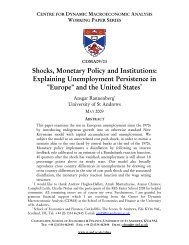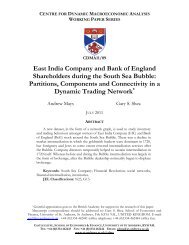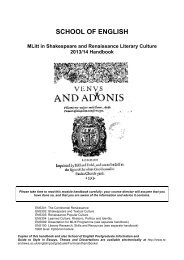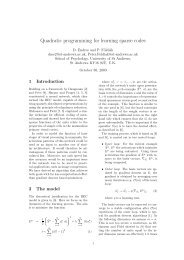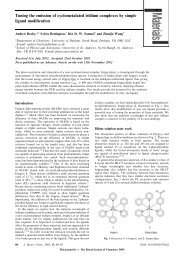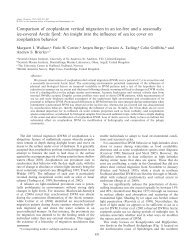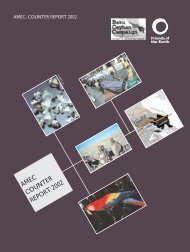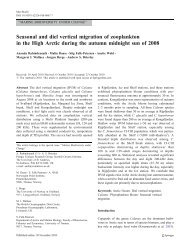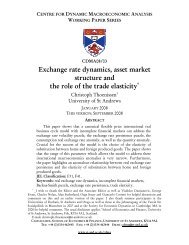introduction what is social anthropology? - University of St Andrews
introduction what is social anthropology? - University of St Andrews
introduction what is social anthropology? - University of St Andrews
You also want an ePaper? Increase the reach of your titles
YUMPU automatically turns print PDFs into web optimized ePapers that Google loves.
LECTURE 2: POWERFUL PEOPLE: ELITES, BIG MEN AND LEADERS<br />
With the current world economic cr<strong>is</strong><strong>is</strong> and ongoing conflicts in many parts <strong>of</strong> the world, the<br />
study <strong>of</strong> elites become <strong>of</strong> crucial importance to understand the nature <strong>of</strong> power,<br />
domination and res<strong>is</strong>tance. But who are the elites? How does someone join the ranks <strong>of</strong> the<br />
elite? Following from the previous lecture on power, in th<strong>is</strong> lecture we will look at some<br />
ethnographic case studies to explore how anthropolog<strong>is</strong>ts have studied, defined and<br />
conceptualized those who holds power.<br />
• Fumanti, M. 2007a. ‘Burying E.S: Educated Elites, Subjectivity and D<strong>is</strong>tinction in Rundu’,<br />
Journal <strong>of</strong> Southern African <strong>St</strong>udies, 33(3): 469‐483.<br />
• Lentz, C. 1994. ‘Home, Death and Leadership: D<strong>is</strong>courses <strong>of</strong> an Educated Elite from northwestern<br />
Ghana’, Social Anthropology, 2 (2): 149‐169.<br />
• Marcus, G.E. 2000. ‘The Deep Legacies <strong>of</strong> Dynastic Subjectivity: The Resonances <strong>of</strong> a<br />
Famous Family Identity in Private and Public Spheres’ in de Pina‐Cabral, J. and Pedroso de<br />
Lima, A. (eds.), Elites. Choice, leadership and succession. Oxford and New York: Berg.<br />
• Nadel S. 1956. ‘The Concept <strong>of</strong> Social Elites’ International Social Science Bulletin, 8 (3): 413‐<br />
424.<br />
• Pedroso de Lima, A. 2000. ‘“How Did I Become a Leader in My Family Firm?” Assets for<br />
Succession in Contemporary L<strong>is</strong>bon Financial Elites’, in de Pina‐Cabral, J. and Pedroso de<br />
Lima, A.(eds.) Elites: Choice, leadership and Succession. Oxford and New York: Berg.<br />
• Sahlins, M. 1963. ‘Poor Man, Rich Man, Big Man, Chief: Political Types in Polynesia and<br />
Melanesia’, Comparative <strong>St</strong>udies in Society and H<strong>is</strong>tory 5 (3): 285‐303.<br />
• Scott J. 1990. ‘Introduction’ in The sociology <strong>of</strong> Elites Vol. 1. Aldershot: Edward Elgar.<br />
• Scott, J. 2008. ‘Modes <strong>of</strong> power and the reconceptual<strong>is</strong>ation <strong>of</strong> the elites’, in Savage, M. &<br />
Williams, K. (eds.) Remembering Elites. London: Blackwell Publ<strong>is</strong>hing.<br />
• Weber, M. 1968. On Char<strong>is</strong>ma and Institution Building. Chicago: Chicago <strong>University</strong> Press.<br />
• Werbner, R.P. 2008. ‘Responding to Cosmopolitan<strong>is</strong>m: Patriots, Ethnics and the Public<br />
Good in Botswana’, in Werbner, P. (ed.) Anthropology and the New Cosmopolitan<strong>is</strong>m.<br />
Oxford: Berg.<br />
LECTURE 3: POWER, SOCIAL SUFFERING AND STRUCTURAL VIOLENCE<br />
In recent years, some anthropolog<strong>is</strong>ts, who have been influenced by critical medical<br />
<strong>anthropology</strong>, have focused their attention on questions <strong>of</strong> <strong>social</strong> suffering and structural<br />
violence. These approaches recogn<strong>is</strong>e that suffering and trauma must be embedded in<br />
cultural and political context. By linking personal experiences <strong>of</strong> injury and d<strong>is</strong>ease with<br />
political economy, the cognitive, psychological, and somatic are shown to be inextricably<br />
tied to the structural and political.<br />
• Bourgo<strong>is</strong>, Philippe. 2003. In Search <strong>of</strong> Respect: Selling Crack in El Barrio.<br />
Cambridge:Cambridge <strong>University</strong> Press. (See Esp. Introduction and Chapters 3 and 4)<br />
• Connors, Margaret. 1996. ‘Sex, Drugs, and <strong>St</strong>ructural Violence: Unravelling the Epidemic<br />
Among Poor Women in the United <strong>St</strong>ates’ in Paul Farmer, Margaret Connors, and Janie<br />
Simmons (eds.) Women, Poverty, and AIDS: Sex, Drugs, and <strong>St</strong>ructural Violence, Maine,<br />
Common Courage Press.<br />
• Farmer, Paul. 2004. ‘An Anthropology <strong>of</strong> <strong>St</strong>ructural Violence’, Current Anthropology 45(3):<br />
305‐25. (Including CA* commentary on the article)<br />
• Kovats Bernal, J. Cr<strong>is</strong>topher. 2006. ‘Sleeping Rough in port‐au Prince’ an ethnography <strong>of</strong><br />
street children and violence in port‐au prince, <strong>University</strong> press <strong>of</strong> Florida (see Introduction<br />
18



